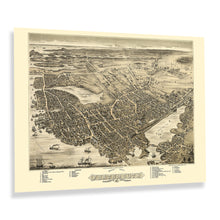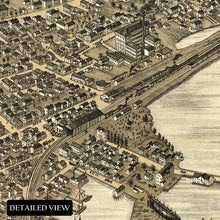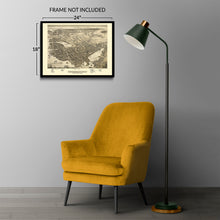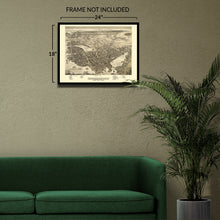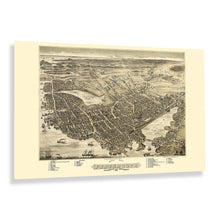
Feature Points
- VINTAGE MAP REPRODUCTION: You’ll love this high quality historic reproduction of 1877 Portsmouth New Hampshire Map Print. Our museum quality prints are archival grade, which means it will look great and last without fading for over 100 years. Our print to order maps are made in the USA and each map is inspected for quality. This beautiful artwork is a perfect addition to your themed decor. Vintage maps look great in the home, study or office. They make a perfect gift as well.
- MUSEUM QUALITY: This high quality map print will be a great addition to your vintage-themed wall. Don't waste money on cheap-looking, thin paper posters. We use thick, fine art print quality matte paper. Our professional’s choice matte paper displays artwork in high detail without glare. The color is vibrant and text is easy to read. When framed, this map looks absolutely stunning.
- A LOOK BACK AT HISTORY: This is an impressive, historic reproduction of 1877 Portsmouth Wall Art Map of New Hampshire Poster. A true piece of history. See our product description section for more fascinating information about this historic map and its significance.
- READY TO FRAME: This print includes a 0.2 inch border for a perfect frame fit and look. Our maps are designed to fit easy-to-find standard frame sizes, saving you money from having to pay for a custom frame. Each map is inspected for quality and shipped in a rigid tube.
- HISTORIX: We love history and art. Sometimes old maps have tears, folds, separations and other blemishes. We digitally restore and enhance maps while keeping its historical character. All our maps are proudly made in the USA. Customers all over the world love our vintage maps and we know you will too.
Â
Additional Information
Produced and published by one of the early pioneers of the form Albert Ruger, this bird's eye perspective of Portsmouth, New Hampshire, shows the town in a period of considerable growth and transition as the nation rebounded from the American Civil War. The industrial revolution drew residents to the region, eager for work in the numerous manufacturing facilities that were flourishing in the late nineteenth century. The first European settlement was established in 1630 on the banks of the Piscataqua River. The area would continue to grow throughout the following centuries as a thriving trade for upstream markets developed.
Ruger's work served as marketing materials to attract residents and merchants alike, and panoramic maps were widely popular during the late nineteenth and early twentieth centuries. They bear a distinctive aesthetic, and because they were not illustrated for navigation purposes, they often feature unique artistic flourishes not common with other pieces of cartographical history. The city's location on the Piscataqua across from Kittery, Maine, made it the home of a thriving shipbuilding industry from its early days. It remained a critical part of the Continental Army's Naval Fleet during the American Revolution aiding in the transportation of gunpowder, artillery, and other crucial support like tents and blankets.
Bird's eye perspectives immediately transport the viewer back in time, creating a link between the past and present while providing a snapshot of the town's history, evolution, and development. This is a rare piece of late nineteenth-century American cartographical history.








